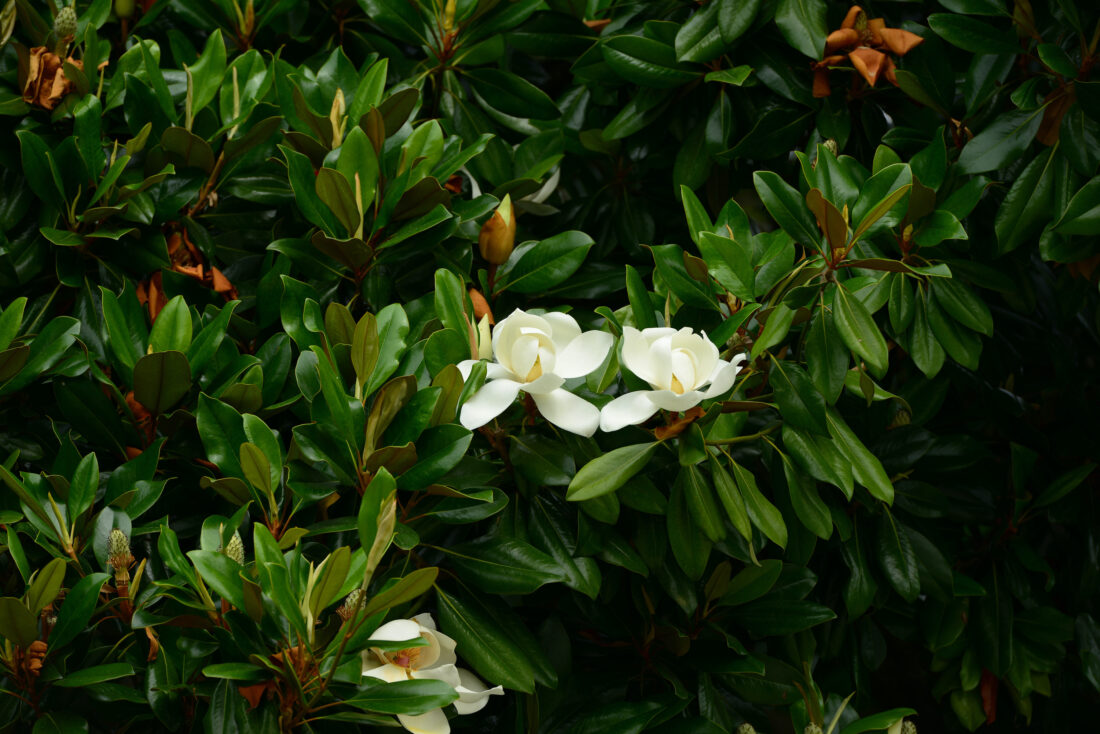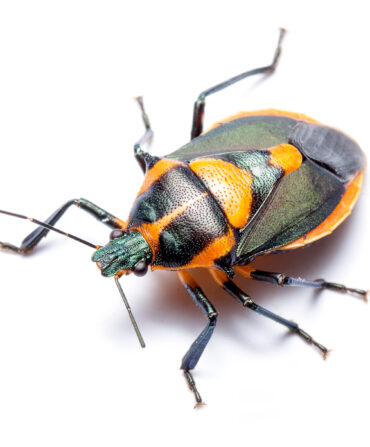“Spring is arriving here in Mississippi,” says Bob Brzuszek, a professor of landscape architecture at Mississippi State in Starkville. “We are in that moment where things are just ready to burst into bloom.” Bruznick enjoys a walk in the forest, but he always has a mind to what species will thrive in a landscaped space as well. Here are six trees that spell springtime—and serve as easy additions to Southern yards that will put on a show year-round.

Eastern redbud
“Redbuds are an announcement of spring, one of the first to bloom,” Brzuszek says. Found across the eastern part of the country, redbud trees sport heart-shaped leaves all year. But come March, the reddish pop from the namesake bud makes it a noticeable tree in the woods, and magenta-pink blossoms soon unfurl. Brzuszek recommends them for landscaping too—they can grow in sun or partial shade (though they prefer sun) and thrive in lots of soil types. Pro tip: The flowers are edible—pop them in a salad for a splash of color and a conversation piece.
Dogwood
“This tree is in the lexicon of most people’s minds for springtime,” Brzuszek says. Flowering dogwoods grow from Toronto south to the Gulf Coast and from southern Maine to eastern Texas, and eleven species are native to the United States. They start blooming in March and through May, before green leaves replace the flowers during the summer. Bruznick’s personal favorite—one that does well for home gardeners—is the roughleaf dogwood, which has small clustered flowers and grows in wetter conditions with partial sun. In the summer, its oblong fruits will attract wildlife.
Parsley hawthorn
Parsley hawthorn is a small spring-blooming tree native to the Southeast that Brzuszek recommends swapping in for dogwood in a yard—they flower at the same time, and it’s easier to grow. It occurs all the way along the Atlantic and Gulf coastal plain, and bursts into bloom between March and May, depending on its location. The leaves look just like parsley, and the dense white spring flowers are often visited by bees and other pollinators. In the late summer and fall, songbirds come for the bright red fruit, called the haw.
Southern crabapple
Another lesser-known flowering tree, Southern crabapple is native to the Southeast and sports pinkish and white fragrant blossoms in March and April. “When one of these is in bloom, the flowers absolutely cover the tree,” Brzuszek says. “Then, in the summer they produce tiny, quarter-sized red-green apples that deer and other animals love.”
Magnolia
“The perfume of the magnolias…well, that’s the reason we live in Mississippi,” Brzuszek says. These famous and much-anticipated blooms arrive in late spring, and some stick around through the summer. The best known variety is Magnolia grandiflora, or the Southern magnolia, but that’s by no means the only species native to the South. There’s also cucumber, Fraser, sweetbay, umbrella, and more, but Brzuszek is especially partial to bigleaf magnolia, which grows in forests where beech and other magnolias occur. “I’ve seen leaves that are over three inches long and eight inches wide, and the blossoms are the size of a dinner plate,” he remembers. “It is a majestic Southeastern plant that we don’t talk about a lot, but it’s very much in the hearts of people who love the woods.”
White fringetree
White fringetree is a springtime knockout. “It’s the kind of tree where when it comes into bloom, people you don’t even know that are driving down the street will see it, stop, and ask what that tree is,” Brzuszek explains. White fringetree, also called Grancy Graybeard, occurs in the eastern United States, and in late spring, after most other trees have finished their shows, it transforms—lacy, fragrant blossoms hang down and cover the tree completely. In summer, it produces small fruits that look like tiny olives (it is in the olive family), and its foliage turns yellow come fall. It only reaches twenty-five feet in height and grows well in many conditions, from full sun to part shade.








